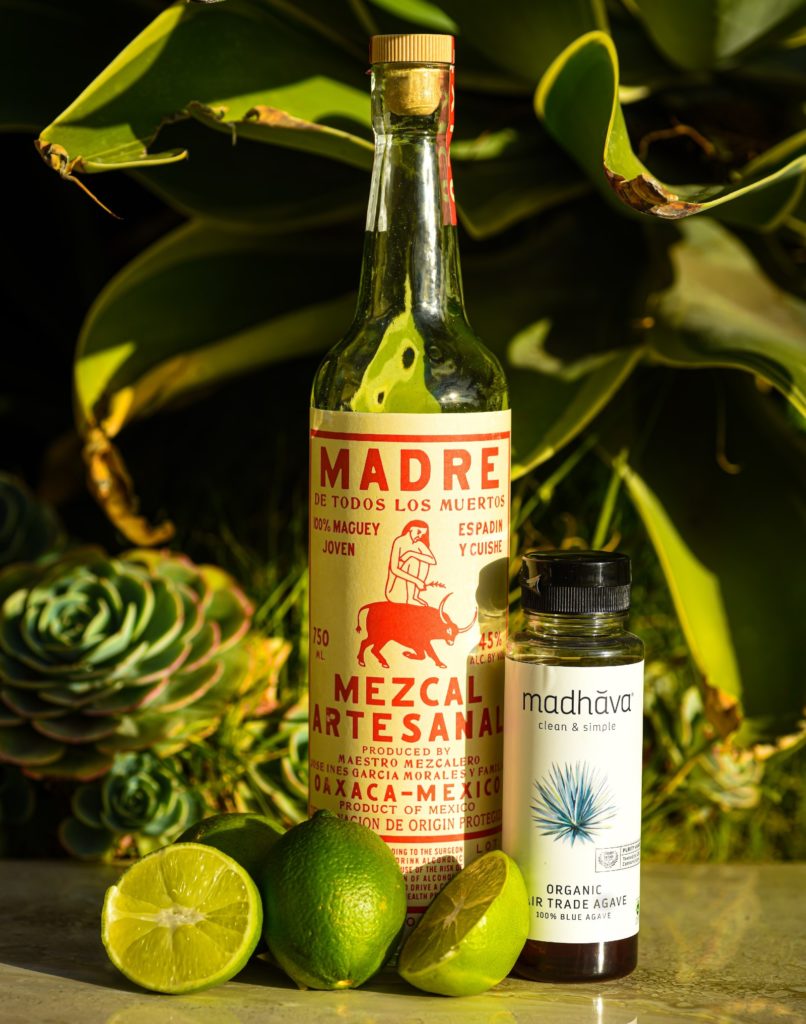Mezcal is quickly becoming the next big spirit in the alcohol industry. Commonly referred to as a cousin of tequila, this smoky drink is rapidly distinguishing itself as its own unique entity.
Just how authentic champagne must come from Champagne, France, and how legit Scotch only comes from Scotland, mezcal also has some geographical distinctions. The majority of all mezcal is produced in Oaxaca, Mexico. The next most prominent mezcal producer is Durango.
This punchy drink is made from piñas. This word translates to “pineapples” in Spanish, but is actually used to refer to the heart of the agave, a plant used in a variety of drinks and supplements.
The taste of freshly-roasted agave can be likened to a blend of grilled corn and tropical fruit. Many people say that the taste of this plant is inherent to Mexico, which is known for its huge, arid plains and sunny desert hills in its rural areas.
Each bottle of mezcal has a different palate, based on how its agave was grown and harvested. Some mezcals taste more vegetal. Some taste more floral. And then, there are those that taste more sweet and sugary. You may even run into some mezcal that is nutty or earthy, tasting like minerals.
We’re here to teach you how to drink mezcal the right way, because this classic spirit is much more complex than most people think. Though it is becoming trendy right now, it actually has countless years of history behind it.
When you’re tasting mezcal, start with Espadin
The first mistake that most novice drinkers of mezcal make is purchasing an expensive bottle. When first starting out, you don’t want to get the most expensive stuff. Not only will you be wasting money, you probably won’t even have a solid enough understanding of the drink to enjoy it fully.
Beginners should start out with Espadín, the most common type of mezcal, which offers a broad range of flavors. With this spirit, you’ll notice earthy, fruity, and vegetal notes. Drinking Espadín is a great way of becoming familiar with mezcal and getting to know its palate.
If you really want to become an expert at tasting mezcal, it’s best to drink mezcal from the central valleys of Oaxaca and from the lower mountains of Guerrero. These two states are the richest in mezcal tradition and can be considered representatives of the culture.
Espadín is also an ideal cocktail ingredient, as it provides several different flavors without overwhelming the drink. Try making a mezcal old fashioned with some mezcal, tequila, agave nectars, and some bitters!
You can find Espadín at many bars. Its relatively neutral profile makes it easy to drink and popular among young people. It is also easily stocked, as it is harvested early when the agave is between six and eight years old.
Pour mezcal out of a Copita
A copita is a wide, bowl-like structure that can be used to serve mezcal. They are typically made of clay and have some kind of imprint or lettering etched into their design.
By using one, you can embrace the traditional way of enjoying mezcal, while also enhancing its aromas.
The broad, evenly distributed shape of a copita allows for the aroma of mezcal to gently be released all around you. When you sip mezcal out of a conventional glass, the alcohol begins to evaporate, bunching up at the fat part of the glass. This causes the alcohol, as well as the aromas, to shoot up through the skinnier part of the glass, blasting directly into your face.
When you’re drinking mezcal, you want the aromas of the spirit to hang out around you, so they are easily distinguishable from one another. When they’re all released at once into your face, it’s difficult to differentiate which smell is which.
This scenario is okay for spirits aged in wood, as the elements of the drink will balance out its profile. However, for a clean, unaged spirit like mezcal, it is best to use a copita or some kind of bowl-like vessel to drink it.

Smell the mezcal on your palm
One thing you should do before you take your first sip of mezcal is to smell it. Put your glass up to your nose and take a sniff.
Then, set down the glass and pop a finger into the drink. Put some of the liquid into your palm and hold it up to your nose. You should be able to smell just the sugars from the roasted agave. Once the alcohol hits your fingers, it evaporates, leaving its raw ingredients to shine.
Knowing how mezcal smells in its rawest form will help you to develop a taste for it. You’ll also know right off the bat whether or not you like mezcal from its smell.
Part of the reason that mezcal has risen to popularity is its iconic imagery. Sometimes, mezcal is illustrated in the media as having a worm in its bottle. Yes, a literal, slimy worm.
It is a longtime myth of mezcal that if you eat this worm, you’ll start hallucinating and seeing crazy, out-of-the-world visions. However, this legend is really nothing more than that; a legend.
True, quality mezcal brands nowadays don’t use the worm at all. And the ones that did certainly didn’t use worms with any hallucinogenic properties. Today, if you see a brand using a worm in their bottles, their mezcal is likely outdated and of poor quality.
Though the myth of the psychedelic worm has been debunked, there is some validity to the use of worms in mezcal. You see, in Mexico, worms naturally come out of the agave plant. People actually pulverize them and add their remains to salt, creating worm salt.
This worm salt is a frequently used additive to mezcal. Traditionally, this drink is enjoyed with a half-wheel of orange wedged in it, as well as a sprinkle of worm salt. If you’re looking for the authentic mezcal experience, throw some worms in there!
Look For The Right ABV
According to the law, mezcal must be distilled at least two times to an alcohol level of 36 to 55%. The sweet spot in this range is 45 to 55%, which is the point where there is enough alcohol to potentiate the spirit’s flavors, but not too much to overpower it.
In this range, the full expression of mezcal’s palate is displayed. To get the full mezcal experience, you should try to find a bottle with this level of alcohol.
Many mezcal brands in the United States sit below this standard, around 40 to 43% ABV. Don’t be mistaken; there are many mezcal varieties that don’t fit into the golden range of ABV, but that doesn’t mean they’re not quality. They just don’t provide as accurate of a depiction of mezcal as traditional varieties do.
Perfect smokiness
Mezcal is best known for its smoky taste. In fact, this is how most people differentiate mezcal from tequila. What most fail to realize, though, is that tequila is actually a type of mezcal!
Mezcal is literally made by roasting agave in an underground pit. The fact that it tastes smoky is not a coincidence. In contrast, tequila is made by baking agave, which gives it its more smooth taste.
The level of smokiness in your mezcal can vary. In some bottles, that smokiness slaps you in the face, but in others, you may find just a subtle hint of smokiness. There is no correlation between smokiness and quality. Ultimately, it is all up to the user’s preference.
Takeaway
With these tips, you’re ready to enjoy mezcal to its fullest potential. Before you go out and spend hundreds of dollars on some mezcal, make sure you know what you’re getting into. This drink has a rich history and culture that should not be ignored.
Hopefully, you will no longer mistake this distinct drink for tequila. Who knows? In a couple of years, mezcal might be the more popular name between the two!
This classic drink of Oaxaca can be found at any local retailer, as well as on Saucey, the premier alcohol delivery service in America. We offer a variety of mezcals, as well as other spirits, beers, and wines.
Maybe you’re in the mood for the Wild Shot Mezcal Silver. Sitting at 43.4% ABV, this quality mezcal is known for its smoothness and subtle smokiness.
Or how about a more natural, robust finish? Check out the Xicaru Silver Mezcal! Its palate includes agave, mesquite, and ocote. It’s the perfect mezcal to pair with a light dinner.


